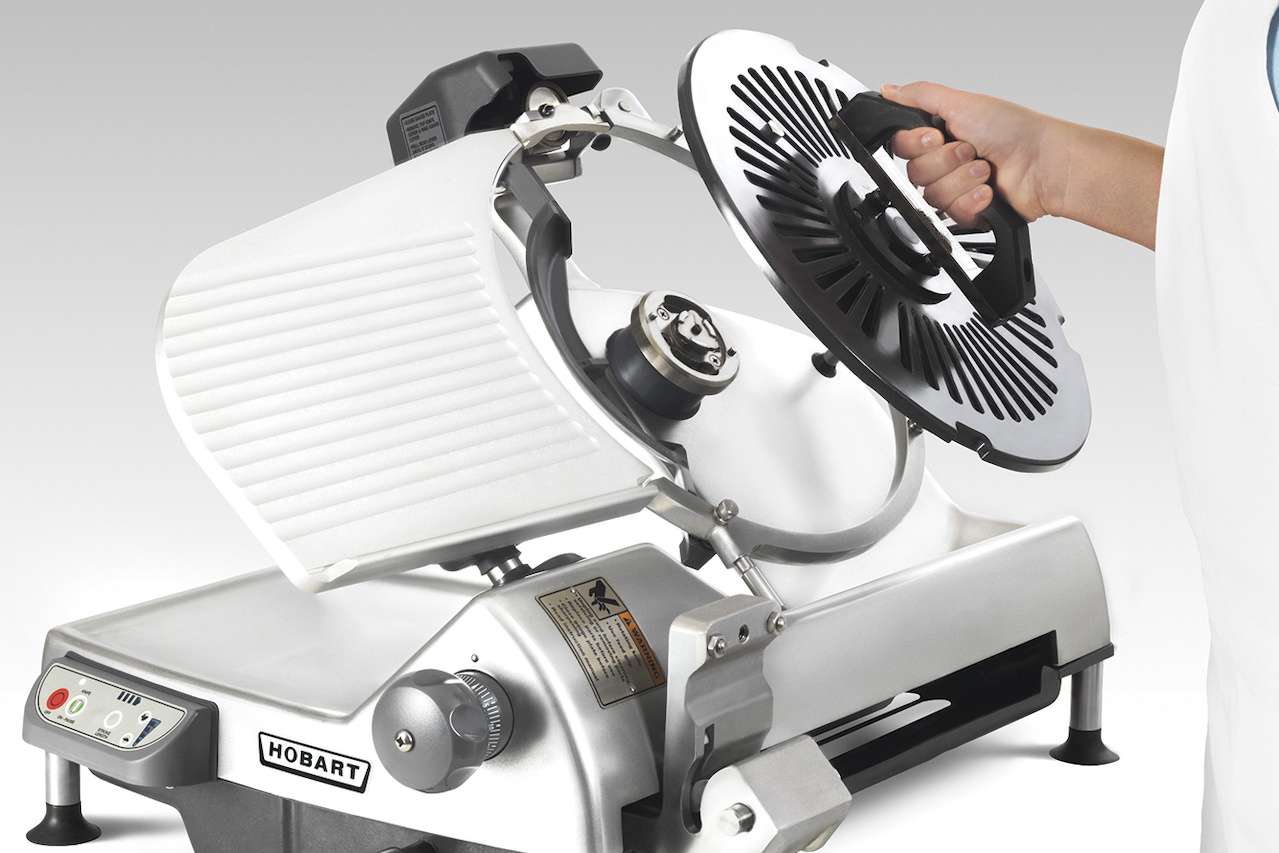
A Hobart slicer stands at the crossroads of craftsmanship and necessity, a machine both mundane and miraculous in how it reshapes the rhythms of commercial kitchens across Singapore and beyond. In the fluorescent light of dawn, before customers arrive, these gleaming stainless steel machines wait patiently, ready to transform whole into parts with precision that human hands could never maintain.
The Quiet Symphony of Precision
What separates these professional slicers from their home counterparts isn’t merely durability or size—it’s the almost poetic precision they bring to the culinary world. Each morning in kitchens across Singapore, chefs and prep cooks engage in a ritual that has become second nature: powering up their Hobart slicer and watching as it transforms:
- Sides of cured meat into paper-thin, translucent sheets that melt on the tongue
- Blocks of aged cheese into uniform slices that each contain precisely the same balance of flavors
- Vegetables into consistent pieces that will cook at identical rates, ensuring perfection in finished dishes
- Breads into uniform slices that speak of care and consistency
This precision isn’t merely aesthetic—it’s economic. In the narrow margins of food service, consistency translates directly to profitability. A slicer that maintains its calibration through thousands of operations becomes not just a tool but a silent partner in the business.
Engineering Beyond the Visible
The brilliance of a Hobart slicer lies in what you don’t immediately see. Behind its apparent simplicity hides engineering that rivals some of the most sophisticated kitchen equipment available in Singapore today.
At the heart of these machines lies the blade—not merely sharp but designed with metallurgical science that would have seemed like alchemy a century ago. The patented “CleanCut” knife with its cobalt-alloy edge represents technology that “stays sharp 2-3 times longer than other knives,” according to equipment specialists. This means fewer interruptions for maintenance and more consistent results throughout long production runs.
The “Zero-Knife exposure” technology—a Hobart exclusive—speaks to how these machines have evolved not just for performance but for human safety. In an industry where injuries can threaten livelihoods, this feature provides “operators an additional level of confidence while sharpening and cleaning.” The machine becomes not just a tool for creating food but one designed around the humans who operate it.
The Dance of Maintenance
Every relationship requires care, and the one between chef and slicer is no exception. In Singapore’s humid climate, where kitchens reach punishing temperatures, maintaining these machines becomes almost a meditative practice.
The best kitchens establish essential maintenance rhythms:
- Daily cleaning routines that prevent buildup
- Weekly blade inspections
- Monthly deep cleaning
A well-maintained slicer becomes an extension of the chef’s intentions, translating culinary vision into physical reality with mechanical precision.
The Human Element
For all their technological sophistication, Hobart slicers remain tools that require human skill and judgment. Watching an experienced prep cook adjust settings for different products reveals a relationship more complex than mere operation. There’s an intuitive understanding that develops between person and machine, a knowledge that transcends user manuals.
“Proper training is key to enhancing cleanliness and equipment operation in any commercial kitchen,” note equipment specialists. This training isn’t just technical—it’s cultural. It passes down not just how to use a slicer, but why certain practices matter, creating a lineage of knowledge that flows through kitchens across generations.
Older chefs speak of their Hobart slicers with unexpected affection—not just for what these machines do, but for how they’ve witnessed the evolution of the technology over decades. One Singapore-based chef noted that his kitchen’s Hobart has outlasted multiple renovations, three head chefs, and countless staff members—a testament to engineering that prioritizes longevity.
Evolution of Technology
The modern Hobart slicer represents a century of refinement—each generation addressing limitations of its predecessors. Today’s models feature automatic carriages with multiple speeds, advanced sharpening systems, and design elements that prevent debris buildup.
These features aren’t merely conveniences—they’re responses to real challenges faced by kitchen staff working under pressure. They represent technological solutions to human problems, engineering that acknowledges the realities of commercial food preparation.
The Economics of Quality
The decision to invest in a Hobart slicer rather than a less expensive alternative reflects a particular philosophy of kitchen management. The calculation includes factors beyond immediate cost:
- Increased durability that translates to years of additional service
- Better yields through more precise cutting, reducing waste
- Consistent results that build customer satisfaction
In Singapore’s competitive culinary landscape, these factors can make the difference between thriving and merely surviving.
The story of Hobart slicers is ultimately about something larger than mechanical function—it’s about human aspirations translated into steel and engineering. Behind these machines lie generations of design refinement responding to the real needs of working kitchens. The perfect slice isn’t an accident but the result of deliberate choices made by both engineers and chefs who understand that in food service, details matter.
For those who work with these machines daily, a Hobart slicer becomes more than equipment—it becomes part of the kitchen’s identity, a quiet presence that helps define what’s possible. In the relentless pursuit of culinary excellence, the right tools don’t just make work easier—they expand the horizons of what can be accomplished. The perfect slice may seem simple to those who enjoy it, but behind that perfection stands the remarkable partnership of human skill and the precision engineering of a Hobart slicer.